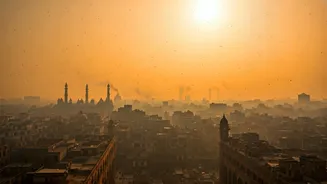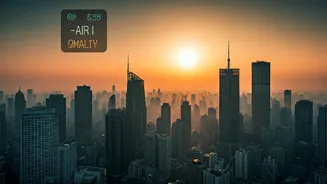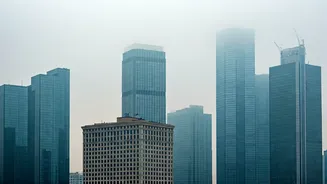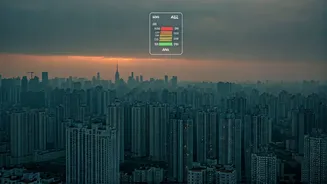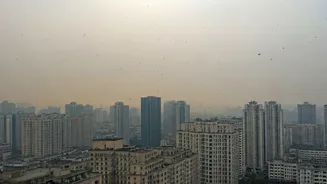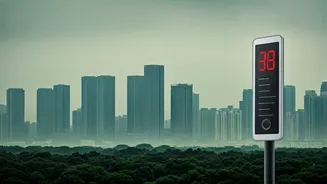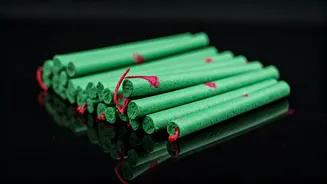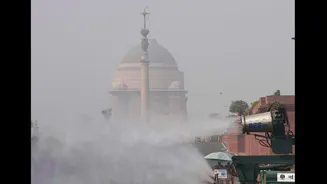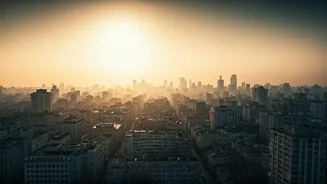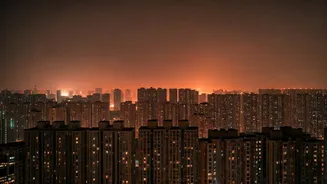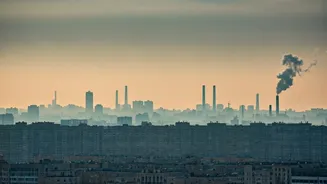Diwali's Aftermath in Delhi
Following the vibrant Diwali celebrations, Delhi faced a concerning aftermath as dense, hazardous smog enveloped the city. The Air Quality Index (AQI)
surged to levels exceeding 350, signaling severe air pollution. This rise was a direct consequence of the extensive use of firecrackers during the festival, which released harmful pollutants into the atmosphere. This resulted in reduced visibility across the National Capital Region (NCR), making it difficult for residents to navigate and leading to significant health concerns, particularly for those with respiratory issues. The situation highlighted the immediate environmental impact of the celebrations.
Pollution Levels Soar
The air quality data revealed a sharp increase in particulate matter (PM2.5 and PM10) concentrations, key indicators of air pollution. The AQI, which measures the overall air quality, showed that many areas in Delhi and its surrounding regions entered the 'severe' category, posing serious health risks. This was due to the widespread burning of firecrackers, which released a cocktail of pollutants including nitrogen oxides, sulfur oxides, and carbon monoxide. These pollutants not only affected air quality but also contributed to respiratory problems, eye irritation, and other health issues for a large number of people. The increase in air pollution levels emphasized the need for a re-evaluation of firecracker usage and stricter pollution control measures.
Visibility and Smog
The dense smog that blanketed Delhi led to a significant reduction in visibility. Photographs captured the extent of the smog, showing a hazy atmosphere that obscured buildings and landmarks. This reduction in visibility not only disrupted daily life but also raised concerns about road safety and air travel. The smog’s impact extended beyond the immediate visual effects, as the pollutants it contained penetrated deep into the lungs, exacerbating existing health problems and potentially triggering new ones. The severity of the smog highlighted the environmental toll of the Diwali celebrations and the need for proactive measures to mitigate air pollution's effects.
Health and Safety
The hazardous air quality posed significant health risks, especially for vulnerable groups such as children, the elderly, and individuals with pre-existing respiratory conditions. Exposure to high levels of air pollutants can cause a range of health issues, including asthma attacks, bronchitis, and cardiovascular problems. Medical professionals advised residents to stay indoors, use air purifiers, and avoid strenuous outdoor activities. The situation highlighted the need for public awareness campaigns and the implementation of pollution control strategies to protect public health. The focus was on mitigating the adverse health impacts linked to the post-Diwali environmental conditions.
Looking Ahead
The aftermath of Diwali served as a stark reminder of the environmental impact of celebrations and the urgent need for sustainable practices. It prompted discussions about alternative ways to celebrate festivals without compromising air quality. Possible measures include stricter enforcement of firecracker bans, promoting green Diwali initiatives, and implementing strategies to reduce pollution from other sources, such as vehicular emissions and industrial activity. Addressing the air pollution challenge requires a multifaceted approach involving government policies, public participation, and technological innovations. This would enable the city to create a balance between celebrating festivals and protecting public health and the environment.
